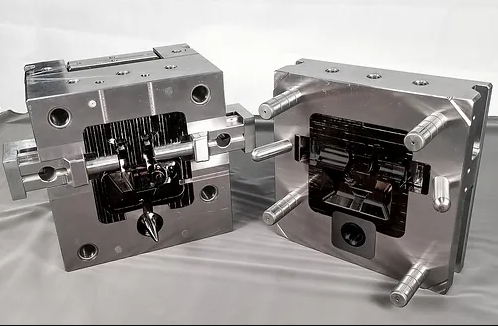The aviation industry has always been at the forefront of technological advancements, constantly pushing the boundaries of engineering and innovation. One area that has played a crucial role in the development of aircraft is aerospace casting. This manufacturing process has revolutionized the way aircraft components are produced, leading to lighter, stronger, and more efficient planes.
Aerospace casting involves the production of complex metal parts using a mold and molten metal. The process begins with the creation of a precise mold, which is typically made from sand, ceramic, or metal. This mold is then filled with molten metal, which is allowed to solidify and take the shape of the mold. Once the metal has cooled and solidified, the mold is removed, leaving behind a finished component.
One of the key advantages of aerospace casting is the ability to create parts with intricate shapes and complex geometries. This is especially important in the aviation industry, where components need to be lightweight yet strong enough to withstand the stresses of flight. Casting allows for the production of components that are not achievable through traditional manufacturing methods such as machining or forging.
Additionally, aerospace casting enables the use of advanced materials that offer superior properties compared to conventional metals. For instance, superalloys, which are highly resistant to extreme temperatures and corrosion, can be cast into turbine blades for jet engines. These blades need to withstand high temperatures and stresses, and casting allows for the precise formation of intricate cooling channels that enhance their performance.
Another benefit of aerospace casting is the reduction in material wastage. Traditional machining methods often require significant amounts of material to be cut away, resulting in a large amount of waste. Casting, on the other hand, allows for a more efficient use of materials, minimizing waste and reducing costs.
Moreover, aerospace casting offers improved structural integrity and reliability compared to other manufacturing processes. The solidification of molten metal in the mold results in a homogeneous microstructure that enhances the mechanical properties of the components. This ensures that critical aircraft parts, such as landing gear or wing structures, are able to withstand the demanding conditions of flight.
Aerospace casting contributes to the overall weight reduction of aircraft. By creating components with complex geometries and thin walls, casting allows for the production of lighter parts without compromising their strength. This weight reduction translates into fuel savings, as lighter aircraft require less energy to fly. In an industry where fuel efficiency and environmental sustainability are key concerns, aerospace casting plays a vital role in reducing the carbon footprint of aviation.

In recent years, advancements in casting technology have further expanded its applications in the aviation industry. Additive manufacturing, also known as 3D printing, has enabled the production of complex castings with even greater precision and design flexibility. This technology allows for the creation of lightweight lattice structures within components, further enhancing their strength-to-weight ratio.
Aerospace casting has revolutionized the aviation industry by enabling the production of complex, lightweight, and high-performance aircraft components. Through its ability to create intricate shapes, use advanced materials, reduce material wastage, and improve structural integrity, casting has become indispensable in modern aircraft manufacturing. As the demand for more efficient and sustainable aviation continues to grow, aerospace casting will undoubtedly play a pivotal role in shaping the future of the industry.
-

- Maqnezium Alüminium Alaşımlı Uşaq Velosipedi 3-8 Yaş Ucuz İsti Satılır 14 düymlük Uşaq Velosipedi FOREVER Topdan Satış 2022
-

- Macbook ortasının OEM tökmə xidməti metal komponentləri
-

- avtomobil üçün yüksək dəqiqlikli tökmə sükan
-

- Maqnezium ərintisi tiksomolding kalıp tökmə İHA hissələri
-

- Magnesium alloy die-casting LED display frame
-

- High precision magnesium thixomolding components laptop housing cover A

 0086-750-5616188
0086-750-5616188 +86 13392089688
+86 13392089688 sales@zhongmei-tech.com
sales@zhongmei-tech.com







